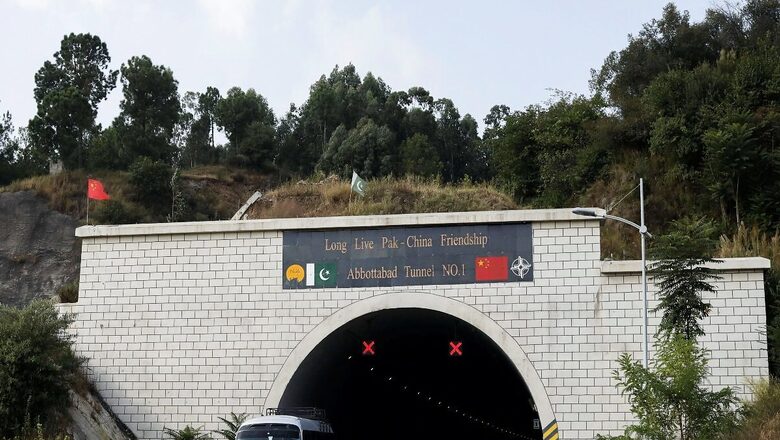
views
Balochistan, Pakistan’s largest and most resource-rich province, is fighting a battle for its survival. In the last week of August, freedom fighters in Balochistan launched one of the biggest attacks in recent history on Pakistan’s security apparatus. As this article was going to press, the Baloch Liberation Army (BLA) was suspected of having killed more than 100 Pakistani troops in a single night. Highways in Balochistan have been captured by the BLA, and every street has turned into a battleground. Pakistan’s defence establishment is also retaliating ruthlessly, killing a large number of civilians. This battle may end in the coming days, but the war between Balochistan and Pakistan will continue unless the root cause of this conflict is addressed.
The roots of this bloody war, raging since 1948 through several phases, lie in prolonged subjugation, underdevelopment, and deprivation of Balochistan by Pakistan.
Despite its vast natural wealth, the people of Balochistan have largely been excluded from the economic prosperity that these resources should ideally provide. The latest blow to them is the China-Pakistan Economic Corridor (CPEC), a massive infrastructure and economic project touted as a game-changer for Pakistan, which has been particularly contentious in Balochistan. While CPEC is often promoted as a vehicle for regional development and economic upliftment, many argue that it has exacerbated the existing inequalities and exploitation in Balochistan.
Historical Context: Balochistan’s Plight
To understand the dynamics at play, it’s essential to delve into the historical background of Balochistan, which has a long history of resistance against what many Baloch people see as the exploitation of their resources by external powers. Since the illegal accession of Balochistan to Pakistan in 1948, there have been multiple insurgencies, driven by grievances related to political marginalisation, economic exploitation, and cultural suppression. Despite being home to vast mineral resources, including natural gas, coal, copper, and gold, Balochistan remains the poorest province in Pakistan. According to the Pakistan Bureau of Statistics, Balochistan’s contribution to the national GDP is disproportionately low compared to its resource wealth, with a GDP per capita significantly lower than the national average.
Table 1: Balochistan’s Economic Indicators vs. National Average
Source: Pakistan Bureau of Statistics, 2023
These figures highlight the stark disparities between Balochistan and the rest of Pakistan, illustrating the longstanding neglect and underdevelopment that has fueled resentment and unrest in the province.
The Promise and Perils of CPEC
The China-Pakistan Economic Corridor (CPEC) is a flagship project of China’s Belt and Road Initiative (BRI), aiming to connect Gwadar Port in Balochistan with China’s Xinjiang region through a network of highways, railways, and pipelines. With an estimated investment of over $62 billion, CPEC is touted as a transformative project that will bring prosperity to Pakistan, particularly its less developed regions like Balochistan. However, the reality on the ground in Balochistan paints a different picture. Critics argue that the CPEC has primarily served the interests of the Central government in Islamabad and Chinese investors, with little regard for the local population’s needs and aspirations.
Resource Exploitation and Environmental Degradation
Balochistan’s natural resources have long been extracted without adequate compensation or reinvestment in the local economy. The CPEC has exacerbated this issue, with large-scale projects often leading to environmental degradation and displacement of local communities. For example, the extraction of minerals and the construction of infrastructure has led to deforestation, loss of arable land, and pollution of water sources.
Marginalisation of Local Workforce
One of the most significant grievances related to the CPEC in Balochistan is the marginalisation of the local workforce. Despite promises of job creation, a large portion of the labour force employed in CPEC projects comes from other provinces or China. This exclusion has left the local population feeling alienated and resentful.
Table 2: Employment in CPEC Projects in Balochistan
Source: Pakistan Planning Commission, 2023
Security Concerns and Human Rights Violations
The militarisation of Balochistan under the guise of securing CPEC projects has led to widespread human rights abuses. The Baloch people have been subjected to enforced disappearances, extrajudicial killings, and a heavy military presence, further alienating them from the state.
Economic Disparities and Unequal Distribution of Benefits
The economic benefits of CPEC have largely been concentrated in other regions, particularly Punjab, while Balochistan continues to lag in terms of infrastructure development, healthcare, and education. This unequal distribution of benefits has deepened the sense of deprivation in Balochistan.
Table 3: Infrastructure Development Under CPEC by Province
Source: CPEC Authority, 2023
Voices of Dissent: Mahrang Baloch and the Baloch Resistance
In recent years, people within Balochistan have become increasingly vocal in their opposition to CPEC and the broader policies of the Pakistani state. Among these voices is Mahrang Baloch, a prominent Baloch activist who has consistently highlighted the exploitation and marginalisation of the Baloch people under CPEC. Mahrang Baloch has criticised the CPEC as a project that primarily serves the interests of the Pakistani elite and foreign investors while further entrenching the economic and political disenfranchisement of the Baloch people.
In a recent statement, she said, “CPEC is not a development project for the people of Balochistan. It is a tool of exploitation that has only brought more suffering to our land. Our resources are being taken, our environment is being destroyed, and our people are being displaced, all in the name of development. But where is this development? It is not in our schools, our hospitals, or our roads. It is in the pockets of the rich and powerful.” Mahrang Baloch’s words resonate with many in Balochistan who feel that their voices are being ignored in the national discourse. Her activism has brought international attention to the plight of the Baloch people, shedding light on the darker side of the CPEC.
Gwadar Port Controversy
At the heart of CPEC is Gwadar Port, a deep-sea port in Balochistan that is strategically located on the Arabian Sea. Gwadar is often portrayed as the crown jewel of CPEC, with promises of turning it into a bustling trade hub that will bring prosperity to the region. However, the reality for the people of Gwadar has been quite different. Despite the massive investment in the port and its surrounding infrastructure, the local population has seen little improvement in their living conditions. Basic amenities such as clean drinking water, electricity, and healthcare remain scarce. The fishing community, which has traditionally been the backbone of Gwadar’s economy, has been particularly hard hit by the development of the port, with many fishermen losing their livelihoods due to restricted access to the sea.
In response to these grievances, protests have erupted in Gwadar, with local residents demanding their rights and a fair share of the benefits from the port. The “Gwadar Ko Haq Do” (Give Gwadar Its Rights) movement has gained momentum, highlighting the disconnect between the grand promises of CPEC and reality on the ground.
CPEC and the Baloch Nationalist Movement
The perceived exploitation of Balochistan under CPEC has also fueled the Baloch nationalist movement, which seeks greater autonomy or even independence for Balochistan. Baloch nationalist groups argue that the Central government’s policies, including CPEC, are designed to extract resources from Balochistan without giving the local population a say in how their land and resources are used. The Balochistan Liberation Army (BLA), a separatist group, has been particularly active in targeting CPEC projects and personnel, viewing them as symbols of the state’s exploitation of Balochistan. The BLA has carried out several high-profile attacks on Chinese nationals and CPEC infrastructure, further complicating the security situation in the region.
Economic Impact of CPEC on Balochistan
Despite the criticism, the Pakistani government and proponents of CPEC argue that the project has the potential to bring economic development to Balochistan. They cite the construction of roads, energy projects, and industrial zones as evidence of CPEC’s positive impact on the region. However, data suggests that the economic benefits of CPEC in Balochistan have been limited and unevenly distributed. While there has been some improvement in infrastructure, the overall economic impact on the province has been modest at best.
Table 4: Economic Indicators in Balochistan Pre- and Post-CPEC
Source: State Bank of Pakistan, 2023
As shown in the table above, while there has been some progress in certain areas, the overall impact of CPEC on Balochistan’s economy has been limited. The slight improvements in GDP growth and industrial growth have not translated into significant reductions in poverty or unemployment, suggesting that the benefits of CPEC have not reached the broader population.
The story of Balochistan and CPEC is a complex one, characterised by a mix of hope and despair, promise and betrayal. The current approach has largely marginalised the local population and exacerbated existing inequalities. Thus, the CPEC has turned out to be yet another chapter of exploitation and neglect in the long history of Balochistan.
The writer is an author and columnist and has written several books. His X handle is @ArunAnandLive. Views expressed in the above piece are personal and solely those of the author. They do not necessarily reflect News18’s views.


















Comments
0 comment